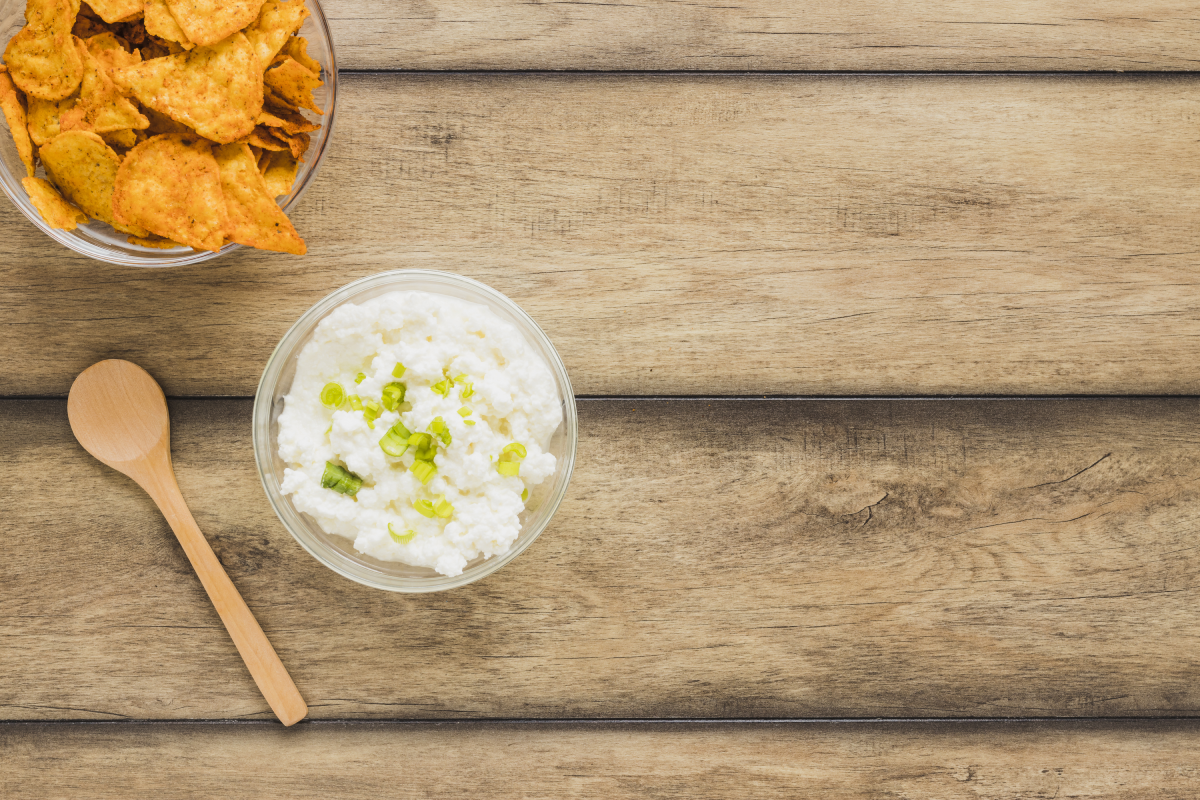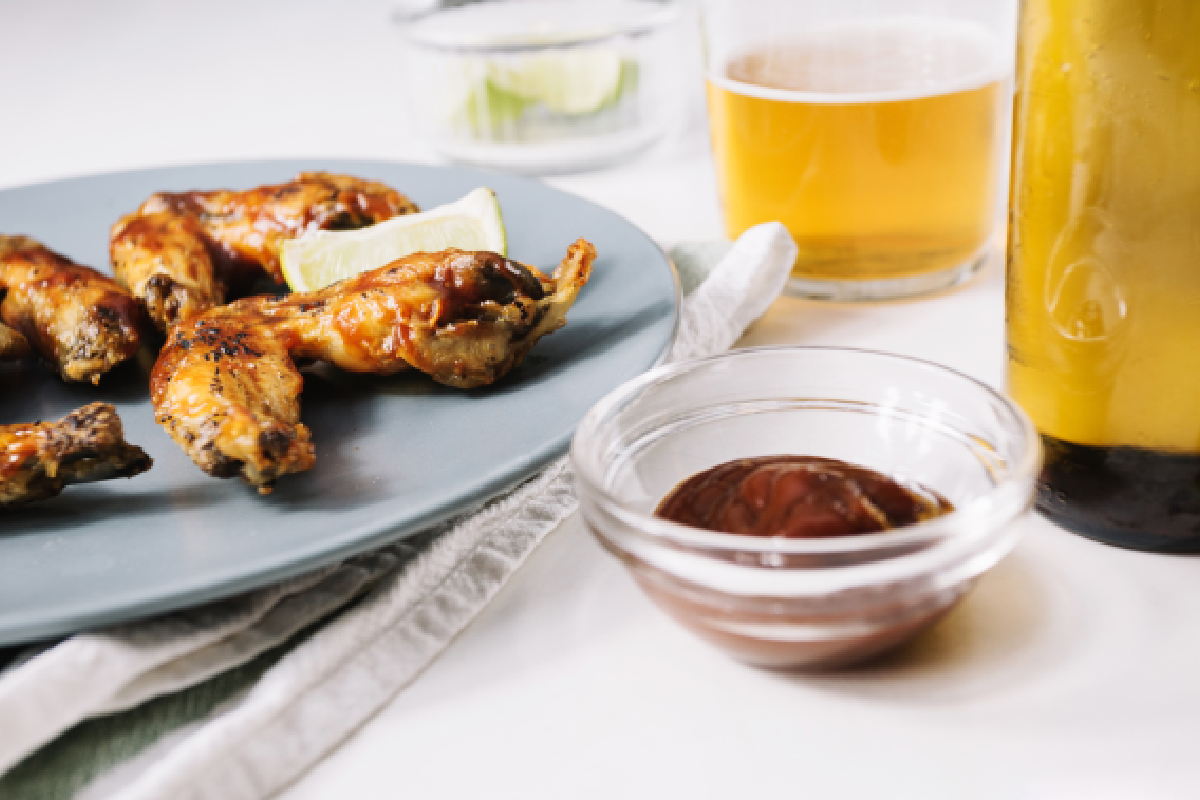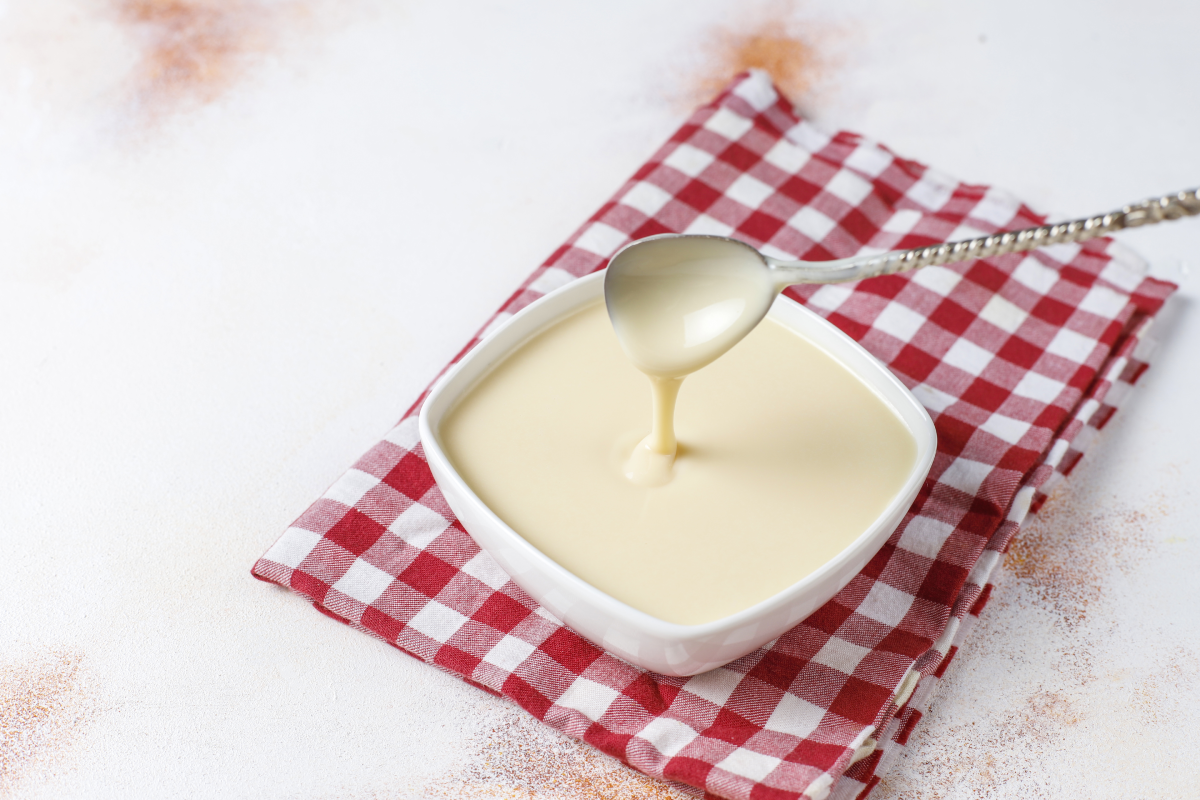Introduction
The tangy flavor and creamy texture of buttermilk are crucial in many recipes, from pancakes and biscuits to marinated fried chicken. Its unique qualities not only enhance taste but also tenderize doughs and batters, marking its importance in the culinary world. However, realizing you’re out of buttermilk right when you’re ready to cook or bake is a common dilemma. Fortunately, making a quick buttermilk substitute with readily available ingredients can rescue your culinary plans. This article provides practical and straightforward alternatives for those moments you find yourself without buttermilk. We will discuss various substitutes, including using milk and vinegar and exploring dairy-free options, to closely replicate buttermilk’s effects. By following these suggestions, you can ensure your recipes remain delicious and your cooking or baking can continue smoothly.
Understanding Buttermilk

Buttermilk captivates with its rich history and unique characteristics, securing its place as a culinary favorite, especially in baking and marinating. Traditionally, buttermilk emerged as the liquid left behind after churning butter from cultured or fermented cream. Known as “traditional buttermilk,” this variant is slightly acidic, contains traces of butterfat, and is rich in probiotic cultures, which contribute to its distinct tangy flavor and creamy texture.
Modern Buttermilk
In today’s market, “cultured buttermilk” dominates, produced through the introduction of bacterial cultures to skim or low-fat milk. This process not only thickens the milk but also imparts a tangy flavor akin to that of traditional buttermilk. Its widespread use in cooking and baking comes from its ability to tenderize gluten, thereby softening baked goods and adding body, and its acidic content, which aids in leavening and enhances recipes with a pleasant tang.
Culinary Uses
The unique properties of buttermilk make it irreplaceable in numerous recipes. Its acidity interacts with baking soda, generating carbon dioxide that helps baked goods rise and become light and airy. This chemical reaction proves essential for buttermilk pancakes, biscuits, and cakes. Moreover, buttermilk’s acid can break down proteins in meat, serving as an excellent marinade that tenderizes and flavors simultaneously.
Nutritional Value
Buttermilk’s culinary appeal is matched by its nutritional benefits. It boasts a lower fat content than regular milk due to the removal of butterfat during the churning process. Rich in essential nutrients like calcium, vitamins, and minerals, buttermilk also provides probiotics, beneficial bacteria that support digestion and gut health.
Substitutes and Variations
Despite buttermilk’s special role in cooking and baking, sometimes substitutes are necessary, whether for dietary reasons or availability. Alternatives, such as milk mixed with lemon juice or vinegar, water-thinned yogurt, or plant-based milks with added acid, can replicate buttermilk’s role in recipes. These substitutes offer the required acidity for leavening and tenderizing, though the flavor and texture might slightly differ from traditional buttermilk.
Conclusion
Buttermilk’s versatility, unique flavor, and texture significantly enhance dishes, particularly in baking and marinating. Understanding its properties and how to substitute it effectively allows cooks and bakers to fully leverage its benefits, even in the absence of the original ingredient. Whether employing traditional buttermilk, cultured buttermilk, or an alternative, this ingredient’s contribution to the culinary arts is undeniable, ensuring delicious outcomes in a myriad of recipes.
What Can I Use If I Don’t Have Buttermilk?
Buttermilk is a staple in many kitchens, revered for its ability to make baked goods tender, impart a rich taste, and even break down proteins in marinades. Yet, it’s not always on hand when you need it. Fortunately, there are several effective substitutes you can use that are just as good as the real thing. Whether you’re baking a cake, making pancakes, or marinating chicken, these alternatives will ensure your dish comes out as intended.
1. Milk and Lemon Juice or Vinegar
This is the most popular substitute for buttermilk. Simply add one tablespoon of lemon juice or white vinegar to a cup of milk. Stir and let it sit for about 10 minutes. The acid from the lemon juice or vinegar will curdle the milk slightly, mimicking the tangy taste and thickened texture of buttermilk.
2. Cream of Tartar
Mix 1.5 teaspoons of cream of tartar with one cup of milk. Cream of tartar, an acid, will thicken the milk and give it the acidity needed to replicate the effects of buttermilk in recipes.
3. Yogurt or Sour Cream
Mixing water with yogurt or sour cream to thin it out can provide a great buttermilk substitute. Use a 3:4 ratio, combining three parts yogurt or sour cream with one part water, to mimic the consistency and tartness of buttermilk.
4. Kefir
Kefir is a fermented milk drink with a tart, tangy flavor and a thin consistency. It can be used as a 1:1 substitute for buttermilk in any recipe, offering the added benefit of probiotics.
5. Vegan Buttermilk
For a dairy-free alternative, mix one tablespoon of apple cider vinegar or lemon juice with a cup of plant-based milk such as almond, soy, or coconut milk. Let the mixture sit for a few minutes to thicken and sour, creating a vegan buttermilk substitute.
6. Diluted Sour Cream or Plain Yogurt
If you don’t have milk, you can also thin out sour cream or plain yogurt with a little water or plant-based milk until it reaches the consistency of buttermilk. This method works well for baking.
7. Acidulated Water
For those who are lactose intolerant or avoiding dairy, mixing a tablespoon of lemon juice or vinegar with a cup of water can provide the acidity required for certain recipes, though it lacks the creamy texture of buttermilk.
Conclusion
Running out of buttermilk doesn’t mean you have to put your cooking or baking plans on hold. With these substitutes, you can achieve similar results and ensure your dishes turn out flavorful and tender. Each alternative offers a solution that can be easily adapted to fit the ingredients you have at home, making them perfect for any last-minute cooking or baking needs.
Dairy-Based Alternatives
In situations where buttermilk is unavailable or if you’re looking for a dairy-based substitute that retains similar characteristics, there are several options to consider. These alternatives can provide the tangy flavor and tenderizing properties needed for your recipes, ensuring your baked goods, marinades, and dressings turn out just as delicious. Here are some dairy-based alternatives to buttermilk:
1. Yogurt
Yogurt is a fantastic substitute due to its similar tangy profile and consistency. To use yogurt as a buttermilk replacement, thin it with a bit of water or milk to match the consistency of buttermilk. Generally, mixing three parts yogurt with one part water creates a good mimic for buttermilk in recipes.
2. Sour Cream
Like yogurt, sour cream has a thick consistency and a tangy taste that closely resembles buttermilk. It can be thinned with water or milk to achieve a buttermilk-like consistency. This alternative is particularly effective in baked goods and dressings.
3. Kefir
Kefir, a fermented milk drink, has a thinner consistency than buttermilk but offers a similar tangy flavor and is rich in probiotics. It can be used as a 1:1 substitute for buttermilk in most recipes, making it an excellent choice for both baking and cooking.
4. Cream of Tartar and Milk
Combining cream of tartar with milk can mimic the acidity and flavor of buttermilk. Add about 1.5 teaspoons of cream of tartar to a cup of milk, stir, and let it sit for a few minutes before using it in your recipe.
5. Blended Cottage Cheese
Cottage cheese can be blended with water or milk to achieve a smoother consistency. While it might not provide the exact tanginess of buttermilk, it can be a suitable substitute, especially in pancakes and baked goods. Use a ratio of 1:1 for cottage cheese to water or milk when blending.
6. Blended Ricotta Cheese
Ricotta cheese, when blended with a little bit of water or milk, can serve as a substitute for buttermilk in baking recipes. This mixture won’t be as tangy but can provide a similar texture and richness.
Using Dairy-Based Alternatives
When using these dairy-based alternatives, it’s essential to consider the texture and flavor they will add to your recipe. Adjustments might be needed based on the specific substitute you choose. For instance, some alternatives may require additional liquid to match the consistency of buttermilk closely, while others might need an extra pinch of acidity to fully replicate buttermilk’s tangy profile.
These alternatives are particularly useful when you’re in a pinch and need a buttermilk substitute that maintains the dairy element in your cooking or baking. Whether you’re making tender pancakes, fluffy biscuits, or a creamy dressing, these dairy-based substitutes can help you achieve the desired results without the original ingredient.Dive into What Can I Use Instead of Buttermilk for Fried Chicken? 5 Savory Substitutes for more specific alternatives tailored to fried chicken enthusiasts.
Non-Dairy Alternatives

Incorporating Buttermilk Alternatives in Recipes
Whether you’re out of buttermilk, have dietary restrictions, or simply prefer to use what you have on hand, incorporating buttermilk alternatives into recipes is a straightforward process. Here’s how you can substitute buttermilk with both dairy and non-dairy alternatives to achieve the desired outcome in various culinary creations.
Adjusting for Baking
Baking is a science, and the acidity in buttermilk plays a crucial role in reacting with baking soda to provide lift and tenderness. When using alternatives:
- Maintain Acidity: Ensure that your substitute has a similar acidity level by using lemon juice, vinegar, or another acidic agent in combination with your alternative milk or dairy product. This is vital for the chemical reaction that causes rising in cakes, bread, and other baked goods.
- Consistency Matters: The thickness of the substitute should closely match that of buttermilk to ensure the batter or dough has the proper consistency. If your alternative is too thick or thin, adjust the liquid quantity slightly to achieve a similar texture to the original recipe.
- Flavor Considerations: Some substitutes may introduce new flavors into your baked goods. Taste your alternative and consider how it might affect the final product. For instance, coconut milk might add a slight coconut flavor, which could be delightful in some recipes and out of place in others.
Marinades and Tenderizing
Buttermilk is often used in marinades for its ability to tenderize meats due to its acidity:
- Choose an Acidic Substitute: When replacing buttermilk in a marinade, ensure your alternative also contains an acid to help break down proteins and tenderize the meat.
- Experiment with Flavors: Non-dairy alternatives or different dairy products can add unique flavors to your marinades. Experiment with these to discover new taste profiles that complement your dish.
Dressings and Sauces
Buttermilk lends a creamy texture and tangy flavor to dressings and sauces:
- Texture Adjustment: If your substitute is thinner than buttermilk, you may need to reduce other liquids in the recipe or add a thickener to achieve the desired consistency.
- Taste Test: Adjust the seasoning and acidity of your dressing or sauce after incorporating your buttermilk alternative to ensure the flavor is balanced and to your liking.
General Tips for Substitution
- 1:1 Substitution: Most buttermilk alternatives can be used in a 1:1 ratio. However, always start with a bit less and adjust as necessary, especially when working with thicker or thinner substitutes.
- Record Adjustments: Keep notes on any adjustments you make for future reference. This will help you replicate successful outcomes and tweak those that need improvement.
- Be Open to Experimentation: Each recipe and substitute combination can yield different results. Don’t be afraid to experiment to find the perfect match for your culinary needs.
Incorporating buttermilk alternatives into recipes allows for flexibility in cooking and baking, making it easier to adapt to dietary preferences, availability of ingredients, and personal taste. With a bit of experimentation and adjustment, you can enjoy all your favorite buttermilk-based dishes without compromise.
Buttermilk and Health
Culinary Creativity with Buttermilk and Its Alternatives

Buttermilk, with its distinctive tangy flavor and creamy texture, has long been a cherished ingredient in both traditional and modern culinary practices. Its versatility allows it to enhance a variety of dishes, from baked goods to marinades. When buttermilk isn’t available, numerous alternatives offer similar benefits, allowing chefs and home cooks to experiment and innovate in the kitchen. Here’s how you can unleash your culinary creativity using buttermilk and its substitutes.
Baked Goods
Buttermilk is famed for its role in baking, where it contributes to the lightness, tenderness, and rise of baked goods.
- Experiment with Scones and Biscuits: The acid in buttermilk reacts with baking soda, creating a leavening effect that results in fluffy, light textures. Try incorporating different buttermilk substitutes like kefir or sour milk to see how each affects the texture and flavor.
- Innovative Pancakes and Waffles: Add spices or citrus zest to your buttermilk pancake or waffle batter for an aromatic twist. Plant-based buttermilk alternatives can also be used to cater to dietary preferences, offering a vegan-friendly breakfast option.
Savory Dishes
Buttermilk isn’t just for baking; its acidity and flavor can enhance many savory dishes.
- Marinades for Tender Meats: Use buttermilk or a dairy-free alternative as a marinade to tenderize chicken, pork, or beef. The lactic acid gently breaks down proteins, resulting in tender, flavorful meat. Experiment with adding herbs, spices, or even pureed fruits to the marinade for additional flavors.
- Creamy Salad Dressings: Create your own buttermilk-based dressings for salads. The tangy profile of buttermilk pairs well with fresh herbs and garlic. For a dairy-free version, use a non-dairy milk and vinegar mixture as the base and adjust the seasonings to taste.
Desserts
Buttermilk can add a subtle tanginess to desserts, balancing sweetness and adding complexity to the flavor profile.
- Cheesecakes and Pies: Incorporate buttermilk into cheesecake batter or pie fillings for a slight tang that complements the sweetness. Non-dairy buttermilk can also be used in these recipes to accommodate dietary restrictions.
- Frozen Treats: Use buttermilk to make frozen yogurt or sorbet. The tanginess of buttermilk enhances the fruit flavors, making for a refreshing and lower-fat alternative to traditional ice cream.
Beverages
Buttermilk can also be enjoyed in its simplest form or as a base for flavorful drinks.
- Smoothies and Lassis: Blend buttermilk with fruits, honey, and spices to make a refreshing smoothie or traditional Indian lassi. Non-dairy alternatives can be used to create lactose-free versions of these beverages.
- Cocktails and Mocktails: Explore the world of savory cocktails and mocktails by incorporating buttermilk or its substitutes. Its tanginess can add depth and complexity to your drinks.
Global Inspirations
Drawing inspiration from various cuisines can provide new ideas for using buttermilk and its alternatives.
- Middle Eastern Flavors: Use buttermilk in marinades for grilled meats or as a dressing for roasted vegetables, incorporating spices like za’atar and sumac.
- Eastern European Dishes: Experiment with buttermilk in traditional soups and stews, or use it to make rich, tangy sauces for dumplings.
Experimenting with Buttermilk in Various Cuisines
Buttermilk, known for its tangy flavor and tenderizing properties, is a versatile ingredient that transcends cultural boundaries, finding its place in a myriad of global cuisines. Its ability to enhance flavors and textures makes it an exciting ingredient for culinary experimentation across different food traditions. Here are some ways to incorporate buttermilk into various cuisines, expanding its use beyond its conventional roles:
Indian Cuisine
- Kadhi: Experiment with buttermilk by using it as the base for Kadhi, a comforting yogurt-based curry that’s tangy and slightly spicy, thickened with gram flour and enhanced with aromatic spices.
- Marinades: Use buttermilk as a marinade for Tandoori dishes. Its acidity helps tenderize chicken, lamb, or paneer, allowing the spices to penetrate deeply and impart rich flavors.
American Southern Cuisine
- Fried Chicken: Buttermilk is famously used in the marinade for Southern fried chicken, making the chicken incredibly moist and tender while providing a perfect canvas for the spices.
- Cornbread: Incorporate buttermilk into cornbread recipes for a moist texture and a balanced flavor that complements the cornmeal’s sweetness.
Middle Eastern Cuisine
- Salad Dressings: Utilize buttermilk to create creamy, tangy dressings for salads like Fattoush, adding a refreshing zest that complements the crisp vegetables and toasted bread.
- Labneh: Experiment with making your own Labneh by straining buttermilk. This thick, creamy cheese can be served with olive oil and za’atar or used as a spread.
Irish Cuisine
- Soda Bread: Buttermilk is a key ingredient in traditional Irish soda bread, reacting with baking soda to produce a light, airy loaf with a distinctive taste.
- Potato Dishes: Try adding buttermilk to mashed potatoes for a lighter, tangier version of this classic comfort food, enhancing the creamy texture and flavor.
Eastern European Cuisine
- Cold Soups: Buttermilk lends itself well to cold soups, such as the Russian Okroshka or the Polish Chłodnik, providing a tangy base that’s refreshing and light, especially in warmer months.
- Pancakes and Crepes: Use buttermilk in batters for Blini or thin crepes, offering a tender texture and a slight tang that pairs beautifully with both sweet and savory fillings.
Scandinavian Cuisine
- Baking: Incorporate buttermilk into Scandinavian baking recipes, such as Danish rye bread or Swedish limpa, to add depth of flavor and a tender crumb.
- Dairy Dishes: Explore the use of buttermilk in dishes like Norwegian rømmegrøt, a sour cream porridge that highlights the creamy, tangy characteristics of buttermilk.
Exploring Fusion Recipes
The versatility of buttermilk invites creative fusion recipes that blend elements from multiple cuisines, such as:
- Buttermilk Tacos: Marinate meats or vegetables in buttermilk with a mix of traditional Mexican spices and herbs before grilling for tacos with a tender, flavorful filling.
- Spicy Buttermilk Pasta: Use buttermilk to create a tangy, creamy sauce for pasta, incorporating spices or ingredients from Italian and Indian cuisines for a unique flavor profile.
FAQs
What is buttermilk?
Buttermilk, a fermented dairy product, frequently finds its use in baking and cooking. Traditionally, people obtained it as the leftover liquid from churning butter out of cream. Nowadays, the buttermilk you commonly find in supermarkets is cultured buttermilk. This type comes to life by adding lactic acid bacteria to milk. This process ferments the lactose, thickens the milk, and endows it with a tangy flavor.
Can I make buttermilk at home?
Yes, you can easily make a substitute for buttermilk at home by adding 1 tablespoon of lemon juice or white vinegar to 1 cup of milk. Stir and let it sit for about 10 minutes until it thickens slightly and becomes tangy, mimicking the properties of buttermilk.
Is buttermilk the same as yogurt?
No, buttermilk and yogurt are not the same. While both are fermented dairy products, they differ in consistency and fermentation process. Buttermilk is thinner and used mainly in baking and cooking, whereas yogurt is thicker and often consumed on its own or in recipes as a condiment or base for sauces.
Can lactose-intolerant individuals consume buttermilk?
Buttermilk contains lactose, so it may not be suitable for individuals with lactose intolerance. However, the fermentation process reduces the lactose content to some extent, and some people with lactose intolerance may be able to tolerate small amounts of buttermilk. There are also lactose-free buttermilk alternatives available.
Are there vegan alternatives to buttermilk?
Yes, vegan buttermilk alternatives can be made using plant-based milks such as almond, soy, coconut, or oat milk mixed with an acid like lemon juice or vinegar. These alternatives mimic the tanginess and acidity of buttermilk, suitable for vegan baking and cooking.Discover The Ultimate Guide to Making Fried Chicken Without Buttermilk, perfect for those seeking alternative methods to achieve that crispy delight.
How does buttermilk affect baking?
In baking, buttermilk reacts with baking soda to produce carbon dioxide, which helps baked goods rise and become fluffy. Its acidity also breaks down gluten strands, resulting in a tender texture. Additionally, buttermilk contributes moisture and a tangy flavor to the final product.

